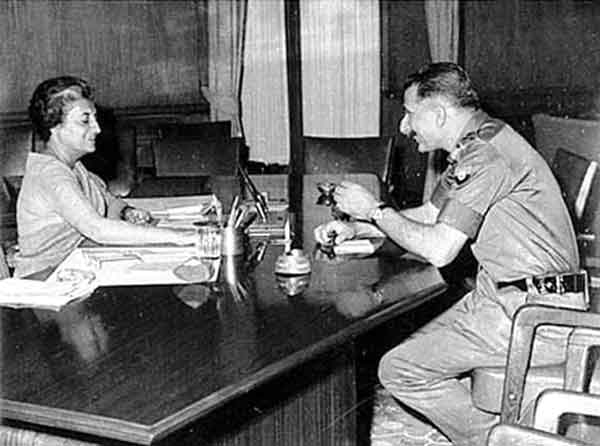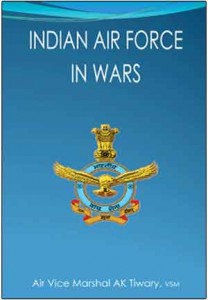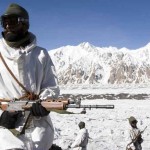“1965 and 1971 Wars were a lesson in how wars should not be fought… the sooner people disabused themselves of the impression that the 1965 War ended in a victory for Pakistan the better…” —Editorial in Pak Defence Journal Sep–Oct 2002
“The Campaign (Bangladesh), though studied by armies abroad, is not studied in much detail in India, nor have the lessons from it, particularly mobility and logistics, been given sufficient weightage.” —Lt Gen JF R Jacob (Chief of Staff, Eastern Army during 1971 War.)
The two Wings of Pakistan were separated by 1600 km of Indian territory. A host of factors, overtime, accentuated the alienation of the Eastern Wing from the West. Briefly these were: attempt to force Urdu over Bengalis in the East; lesser effort and resource for development of the East compared to the West; more resource and revenue generation by the East — majority of which was spent by the West on itself; the distinct culture of the Bengalis from Punjabi culture and efforts to impose Punjabi culture over the Bengalis, the domination by the West in Civil Services, Armed Forces, etc, and finally the refusal of the West to permit certain amount of autonomy to the Eastern Wing.
Click to buy: Indian Air Force in Wars
In December 1970 General Elections were held in Pakistan under the martial law of Gen Yahya Khan, to facilitate the return of democracy. The Awami League Party of the East, under Sheikh Mujibur Rahman swept the national assembly elections and emerged as the majority party.1 In the West though Bhutto emerged the victorious leader on behalf of the Pakistan People’s Party, securing majority. The inability of Yahya Khan to work out a political settlement between these rival parties spelled doom for the democracy yet to be born. The ruling junta rejected the popular mandate.
…refugee figures swelled to 8–9 million and killings in East Pakistan estimated over one million amongst a population of 70 million. The refugees mostly comprised the Hindus and Bihari Muslims…
The demand for autonomy by the Awami League was treated as a sign of attempted secession. Mujibur Rahman was arrested on 25 March 1971. At the same time an armed repression in the Eastern Wing commenced. Beginning with the massacre at Dhaka University, using tanks, the ensuing reign of terror resulted in mass destruction, wanton killings and unending plunder and rape of the countryside and women. As the Eastern Wing tried to fight back the military high handedness by organizing sporadic armed resistance, the intensity of repression increased. This triggered an uncontrollable massive flood of refugees from East Pakistan into India.
Soon, refugee figures swelled to 8–9 million and killings in East Pakistan estimated over one million amongst a population of 70 million. The refugees mostly comprised the Hindus and Bihari Muslims, a sign of Pakistani’s attempt at ethnic cleansing in the process of subduing and subjugating the Bengalis. The first major tide of refugees was in April 1971, followed by another in June and continuing. Thereafter, India was faced with an unmanageable demographic crisis. It was unable to face the problems of feeding and rehabilitation of this mass of refugees comprehensively. Despite repeated pleading, international help was meagre. The international community failed to halt the brutal course of events unfolding in East Pakistan.
On the contrary, the American need to open a link with China through the Pakistani diplomatic channel in July 1971 made the US administration turn a blind eye. This emboldened the military Junta’s resolve to crush the popular uprising in the East. The Pakistani Air Force, including the use of Napalm, and tank columns were used without hesitation or consideration against the unarmed civil population.
The Pakistani Air Force, including the use of Napalm, and tank columns were used without hesitation or consideration against the unarmed civil population.
The Indian Prime Minister Indira Gandhi spared no efforts in seeking international help to avert the looming disaster. At the same time she made clear India’s intention to facilitate return of the refugees back into East Pakistan. As a precaution against the newly emerging USA–Pak–China axis, Mrs Gandhi, in a strategic master stroke, entered India into a 20 year Treaty of Peace and Friendship with the erstwhile USSR. The treaty also included steps for co-operation, peace, collaboration and mutual consultations to remove threats, and was signed on 9 August 1971.2
Meanwhile, the PM had directed the Indian Armed Forces to help facilitate the safe return of the refugees to East Pakistan. She nevertheless continued seeking international help. In October–November she visited six major western countries, but to no avail. Thus India got sucked into a conflict situation with Pakistan towards the end of November 1971. All that was required now was for someone to light the fuse.
Political Direction to the Military
Unusual events in Pakistan are of great concern to India. The year of 1970–71 in that respect was an extraordinary one. Subsequent to 25 March 1971 which saw the genocide of Bengali aspirations and population by the Pak Army, the Indian leadership was faced with a challenge never experienced before. The Prime Minister pursued a multiple path strategy simultaneously. Diplomatically her efforts would go on right up to the end of November 1971; militarily she took some difficult decisions quite early on. The PM asked the military as early as April 1971 to facilitate the return of refugees to an area free of atrocities of East Pakistani authorities.3
The Chiefs were kept in constant touch with developments in the subcontinent and what the Cabinet was thinking about them…
The exiled Awami Party had already declared the state of Bangladesh and formed a provisional government on 10 April 1971.4 The political direction in India was quite unambiguous. But equally forthright was the military advise, largely based on Maj Gen JFR Jacob’s suggestion that correct time for operations would be after the monsoons, along with closure of the Himalayan passes in winter. Chief of the Army Staff Gen Sam Manekshaw proposed the same to the government. He expressed inability to fulfil the political direction in April 1971 for sound military reasons. He readily offered to resign if his decision was not acceptable. The reasons for his decisions, which made enormous military sense were: The foremost was to eliminate the possibility of a simultaneous Chinese threat — by planning operations in the middle of winter. The Himalayan passes would be snow bound, hence the second front of China would not be a threat.5
The second reason concerned the after effects of monsoon. The East Pakistan riverine territory would be suitable for rapid ground action and movement only in winter time. Thus, the ensuing period of 6–7 months from May to Nov–Dec would also permit enough time to beef up the Indian Armed Forces in their equipment, in their training, both individual and joint, and the overall preparation for the War.
The political direction was to secure sufficient area within East Pakistan where the provisional government of Bangladesh could be established. This would also permit a safe return passage of now close to 10 million refugees from India into Bangladesh.6 This was to be achieved rapidly. While these operations were going on in the East, the Military was to undertake holding action in the West. Capture of Dhaka wasn’t an objective at this stage.
Air Chief Marshal (Retd) PC Lal stated in his memoirs, “The Chiefs were kept in constant touch with developments in the subcontinent and what the Cabinet was thinking about them… As defined by the Chiefs of Staff and by each respective Service Chief, it was to gain as much ground as possible in the East, to neutralize the Pakistani forces to the extent we could, and to establish a base as it were for a possible state of Bangladesh. In the West the objective was to hold the Pakistani forces.”7
In the Western theatre the strategy of offensive–defence was decided in order to hold the existing situation and denying Pakistani strategy that, “defence of the East lies in the West”.
Military Aims and Objectives
The political aim was spelt out clearly and at a fairly early stage to enable full military preparation. Thereafter, the three Service Chiefs deliberated jointly and arrived at mutually planned military aims and objectives. Objectives for each service, as well as in support of the other two services. The planning process was joint from the word go and each Service considered an equal and important partner. Thereafter, detailed strategy was worked out for the three Services and then each Service evolved its own individual objectives. One common essential factor to all was the rapidity of the operation, especially keeping in mind the riverine terrain in the East, where multitude of rivers, some mighty ones like the Padma (Ganges) and the Jamuna (Brahmaputra) and innumerable others of sizeable dimensions posed serious challenge to army movement on the ground. Second was the disposition of Pakistani troops, spread all over in the major towns as well as all along the border to deny the Mukti-Bahini secure areas of operations within Bangladesh.
This resulted in rural areas where the Pak Army was either thinly deployed or absent. This factor would have an important bearing on joint Army–Air operations. In the Western theatre the strategy of offensive–defence was decided in order to hold the existing situation and denying Pakistani strategy that, “defence of the East lies in the West”. Based on the above the IAF short listed its aims as follows:
In East8
- Eliminate the PAF at the earliest.
- Render maximum assistance to the Army in the form of offensive support, transport and helicopter support and airborne operations.
- Assist the Navy to isolate East Bengal from West Pakistan and also ensure that the PAF was not able to interfere with the operations of Indian naval ships and aircraft.
- Ensure Air Defence of the area of responsibility.
- To provide maritime air support to the Navy.
In West
In keeping with the aim of holding operations in the West, the IAF was to accomplish tasks in the following order of priority:
- Priority One — Defence of the home bases.
- Priority Two — Support to the Army and Navy, including gaining and maintaining favorable air situation over the tactical areas.
- Priority Three — Counter air operations against enemy air bases and radar stations, and attacks on strategic targets which had a vital role in sustaining the economy and the war potential of the enemy.
- To provide maritime air support to the Navy.
In essence, in the East the IAF had an overwhelming deployment to quickly secure air supremacy and simultaneously provide extensive combat air support to the Indian Army along all the fronts.
In addition, dedicated helicopter support was provided by earmarking No 105 and 110 Helicopter Units to No 4 Corps, which was planned to advance rapidly towards Dhaka from Agartala side. Provision was also made for the contingency Para drop of a Battalion Group.







I’ve to be a little critical here. I always see such articles on how well we did in 1971 war. Definitely we won the war and Bangladesh was created. But has anybody discussed the battle of Longewala? Border movie was based on that. Although we won the battle but that was a horrible intelligence failure. Pakistan’s strength was 2,000 soldiers whereas Indian strength was only 120 soldiers. As per Wikipedia, India only lost 2 soldiers and Pakistan lost 200 soldiers along with 34 tanks. Fortunately, I call that fortunately we won that battle. But 9 out of 10 times you will lose in such situation. So why we never question the strategic and intelligence failure, why we only 120 soldiers? Please note that Pakistan could you easily rampaged towards Delhi if we didn’t stop them at Longewala. Why don’t we question our army for such failures? Next time such failure would result in a disaster. Long live India, Jai Hind.
After Bengladesh in 1971 now again India has good opportunity to break pakistan by liberating Baluchistan. I ask Air Vice Marshal AK Tiwary to study about Baluchistan and Baloch freedom fighters like BLA, BRA & BLF with encouraging words so that Indian military and politician make similar plans to repeat 1971 in 2017
Pakistan is enemy our enemy and they killed our thousands of soldiers in proxy wars since 1987 and in kargil war